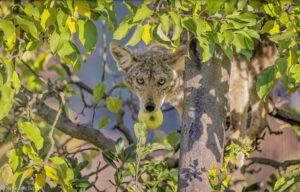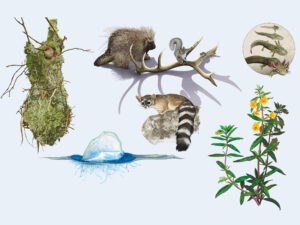When I see deer after birthing season, there are often or usually two or three fawns with the mom. Are deer twins common?
–David Ogden
Good question! As it turns out, scientists have looked at this in some detail. This 2009 post from scilogs.com details a study from Washington that found that (a) singleton fawns had a seemingly better survival rate than twins, but (b) about half of all fawns are actually twins. What explains that?
Turns out that though any one fawn’s chances of survival are higher if it’s not a twin, overall survival rates are so low that the doe is more likely to successfully reproduce if she has twins. From there, natural selection would take over and deer with a tendancy to produce twins would have an advantage.
The best quote in the post is this:
For many animals, especially prey species such as deer, the choice is sometimes not win or lose, but lose or lose less. It may sound grim, but it is an effective strategy: Johnstone-Yellin et al. determined that a the population in which all females produced twins would have a 4% higher growth rate than it would have if all females produced singletons.
But this is a study on mule deer in Washington state. Does it hold for Columbia blacktails here in the Bay Area?
For that, I asked my go-to local deer source, Bruce Morris, who wrote our feature The Deer Next Door, about how well-adapted blacktails are to living in suburbia.
Here’s what he said:
That’s a very interesting article, especially since it’s about mule deer, which as we now know, are the result of hybridization between white-tailed deer and our own western black-tailed deer. So what’s true for mulies would probably hold true for blacktails as well.
What the researchers say above does seem true in terms of a survival numbers game, but doesn’t say exactly what factors contribute to singletons or twins or for that matter triplets. I can only say based on my own observations here in Belmont and at Huddart Park and Edgewood Nature Preserve that fertility seems to be a function of how much rain there has been that season and how much deer fodder is produced. After a rainy year where there’s a lot of fodder the local deer seem to have more twins. This season, after a big drought last year, there seem to be more singleton fawns in the clan that lives in my backyard. After a better wet season, I would guess there would be more twins this May-June. People have reported to me that there seem to be more triplets after a really rainy season when, of course, there would be more fodder available.
But of course this doesn’t answer the $64,000 question: How do the local deer know during the mating season in September-December that it’s going to be a wet year that rainy season? Can they forecast the weather by some process we don’t yet understand? Or is everything skewed in a delayed fashion so that a season after a big rainy season there are more twins and triplets? Dunno!
So many unanswered questions about species that seem so familiar that we take our ignorance for granted!
Thanks, Bruce! And thanks, David, for the question. One question does lead to many more, as usual. If winters get drier here due to climate change, will twin fawns be less and less common? All questions for another day.
Meanwhile, watch out for mother deer and their fawns this spring, and let us know what you see!





